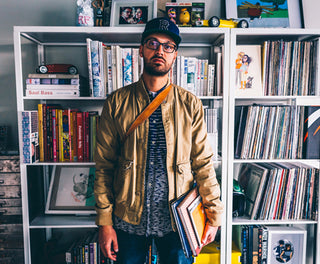My parents worked for the United Nations in Thailand, during the Cambodian crisis. My mom always told me that her initial choice of destination after the war was France. Her whole family, my family, had already been accepted by the french government as refugees and already fled. Meanwhile my mother waited for her papers and they never came. Stranded alone with my older brother, she opted for Canada, where my father was.
To this day, I still wonder how my life would have been if my mother would have gotten those papers from France. Was my name going to be Jean-Baptiste? Would I be working at my aunts flower shop in Pigalle? Or work in the garment industry with my uncle. I don’t know. Those are all maybes and what ifs that I don’t have answers for. But things seemed always cooler down there. The French have their Joie de Vivre attitude. Wine & cheese, etc. But I’ll never know.
What I do know is that the French love American culture more then the Americans (like this guy below). French fries? No. Freedom Fries.
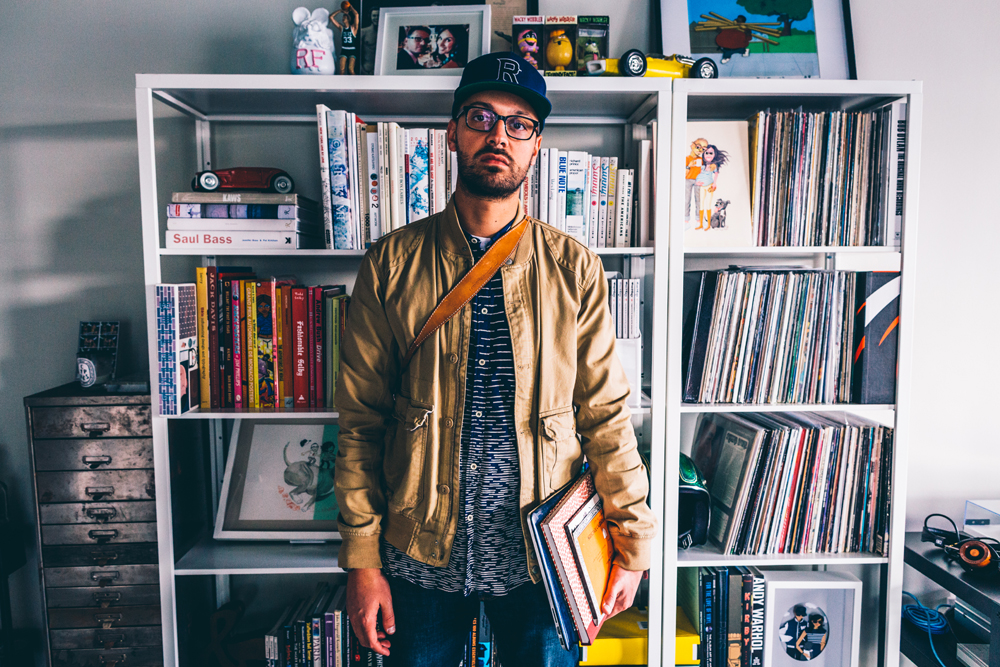
Remember that political euphemism by the US towards France due to their opposition towards the invasion of Iraq? Pointless. Worst re-branding idea ever. And no, I won’t go political in this write-up.
But speaking of branding, I got in touch with my friend and Art Director Jeremy Wirth. Born in the South of France in Marseille, he now resides in LA living that American Dream. He got his papers for the right place.
My friendship with Jeremy started through the shop back in the mid-2000s. He was behind many projects at Off the Hook back in the day. He used to have a brand called Rated Rookies as well. Remember the “Leave Jordan and the Wu Tang alone” quote? Yeah, you do. Well, I can say that I did learn a lot from him, seeing him work on different projects and have this big attention to detail did help me grow as a creative.
Everything needs to have a story or else it won’t work, he says.
Jeremy’s list of accomplishments in the world of advertising is great, having done work for Sonos, Activision, Nike Sportswear, and Jordan Brand, just to name a few. He still continues to strive for uniqueness in his work and not replicate the work of others, but to only create its own identity. We caught up with him recently and learned about how he balances advertising work and passion projects, his directorial work on Denzel Curry’s “Zone 3” music video, the importance of branding and his illustration Achilles heel. The American Dream. Freedom.

JOHNNY F. KIM: How does a French guy from Marseille end up in LA?
JEREMY WIRTH: What I remember from growing up in France in the ’80s, was my father’s obsession with American culture. He used to fix his ’68 dodge in the parking lot while I was learning how to ride my bike around him. Blues and Soul were always playing in the house at all times, and I remember watching religiously The Muppet Show every Saturday with my parents.
And when I was about 10-11, in the early ’90s, I discovered comic books, the NBA, and rap music – and I haven’t let go since. All those years, I had in the back of my head the goal of one day living in the US. After I finished school, I moved to Montreal, Canada. It was the closest place to American culture, but with a touch of the French language – my English was terrible at the time.
Finally after living there for 4 years, I was finally ready to make the final step, and found a job in SF to work on Nike Sportswear and Jordan Brand, then I made the move to LA for another company.
And here I am and I’ve loved every moment of it so far.

So does the current state of employment in France push away their citizens elsewhere?
I wouldn’t say it pushes people away, but it definitely helps [to open] people’s eyes to see that there is more outside of France and weigh in other options that we have to create if we want to succeed. Growing up in France, you would rarely hear about someone who would leave the country. We are really proud people and didn’t need to. But since the last 20 years, I’ve seen so many of my friends and family moving to England, Amsterdam, Canada, the US, etc.
France is an aging country. The people in the media have been the same for the last 30-40 years. Same old faces on television, radio, movies, etc. It feels like there is no room for any change, so instead of fighting what cannot be won, the young talents just pack up and leave. We lost our sense of patriotism a long time ago, and don’t owe France anything anymore.
Don’t get me wrong, I do love my country and do miss it a lot – the culture, the food, my family. I like to think that I’ll come back at some point in my life, but we might need another Prise de la Bastille before we get there.
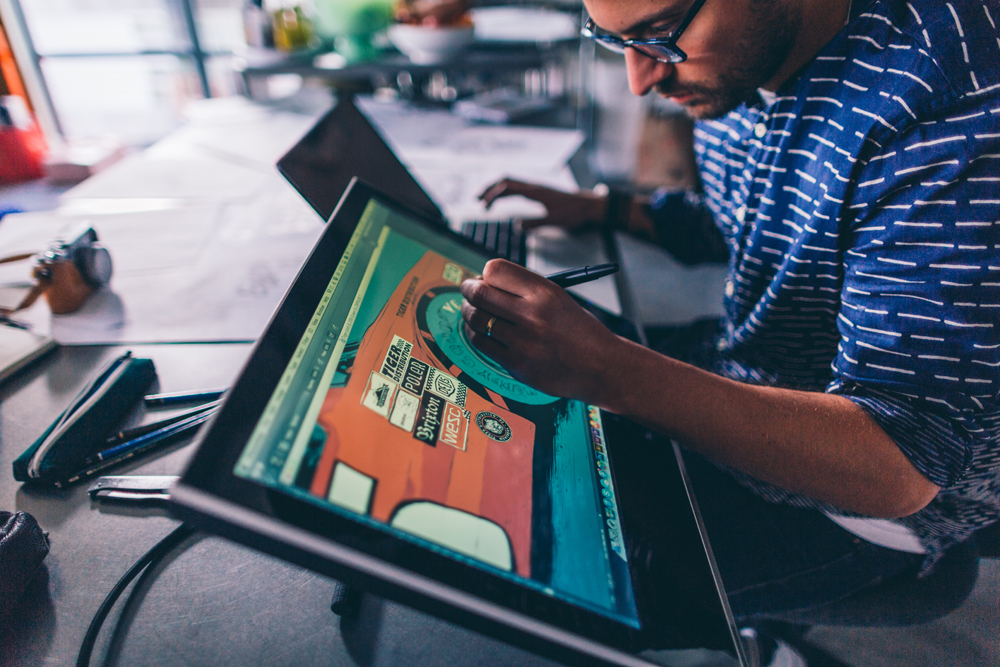
You’ve been living in the U.S for a few years now. There has to be a few things in Montreal that you cannot do in L.A and vice-versa…
Oh man, I wouldn’t even try to compare. These are 2 different beasts. So, I was also living in Montreal when I was younger [in my] mid-20s. A different chapter of my life, it was all about having fun, parties and trying to define who I was creatively speaking.
What I miss the most from Montreal is the people, I still have a bunch of really close friends there, and try to see each other at least 2-3 times a year. Having the best – warm – bagel in the world anytime of the day or night, is something you can only do in Montreal. People outside of Canada don’t really know about those bagels and all think the best ones are in New York City, but fuck that. It’s not even close. I encourage everybody to book a flight to Montreal just for that.

What is your favorite thing to do in L.A?
I’m a grown up now! [Laughs] I’m married, about to be a dad, and have a dog. My favorite things are pretty simple – one of them is to take my motorcycle for a ride along the ocean and lose myself in the canyons for a few hours. Also, every Sunday, my wife and I have people over for dinner. We love to cook and always try to recreate difficult dishes. So we wake up, go get a croissant and espresso from Deus; that is where we sit down and come up with recipe ideas. Then we go on a mission to find the ingredients around town, come back home, and start cooking for hours. It might sounds like the opposite of “cool” for the readers, but it’s pretty much my favorite thing to do.
My weekdays fly by so fast because of my heavy schedule and I can barely do anything during the week anymore, so it’s those simple moments that I enjoy the most lately. I’ve learned how to appreciate them even more and engrave them in my memory.
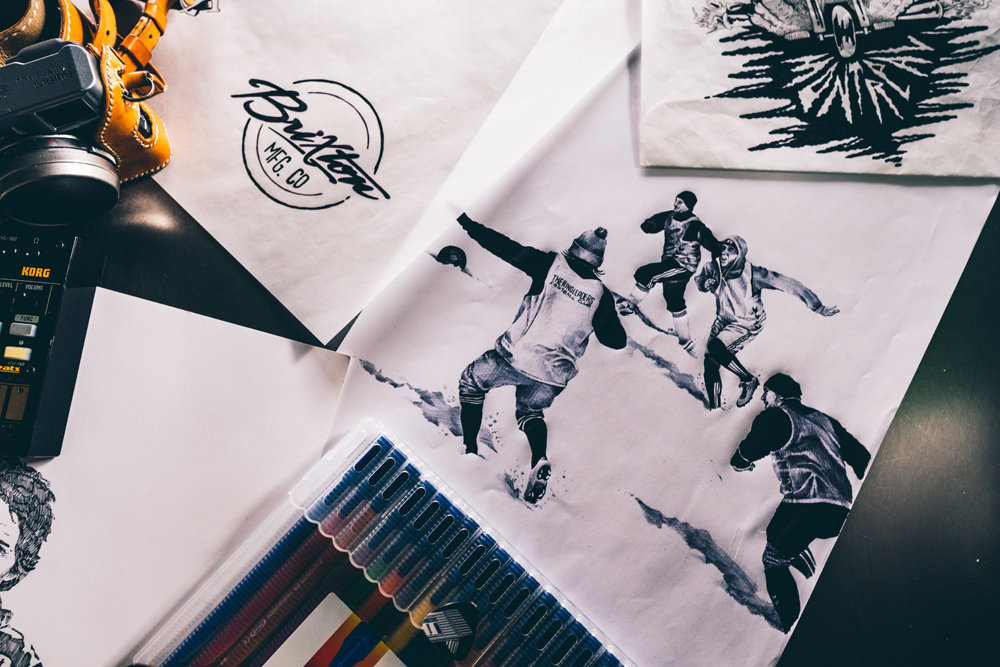

I have had the chance and pleasure to witness you working. You seem to allocate a lot of importance into branding the the work you do. How important is it to establish an identity before starting a project?
The hardest part for a brand is to define themselves. I see so many new projects that don’t last even though they have a good product to sell because they can’t properly nail their image, and therefore can’t express to others who they are.
I like to spend a lot of time with my clients, asking them to show me what they like, their influences, sources of inspiration, etc. Then we start putting some mood boards together, we dig even deeper in the imagery they may like. Then, once we land on something or figure out a direction, that is when I start designing.
The process can be painful at times, because most clients want a branding for themselves that they’ve seen done by other people. So you end up with a lot of clone designs. It’s really obvious in Streetwear trends, for example: You have the Been Trill brands, the Americana brands, the skate brands, etc. They all look the same within those categories. Because people won’t take any risks. Or dare to think outside the box.


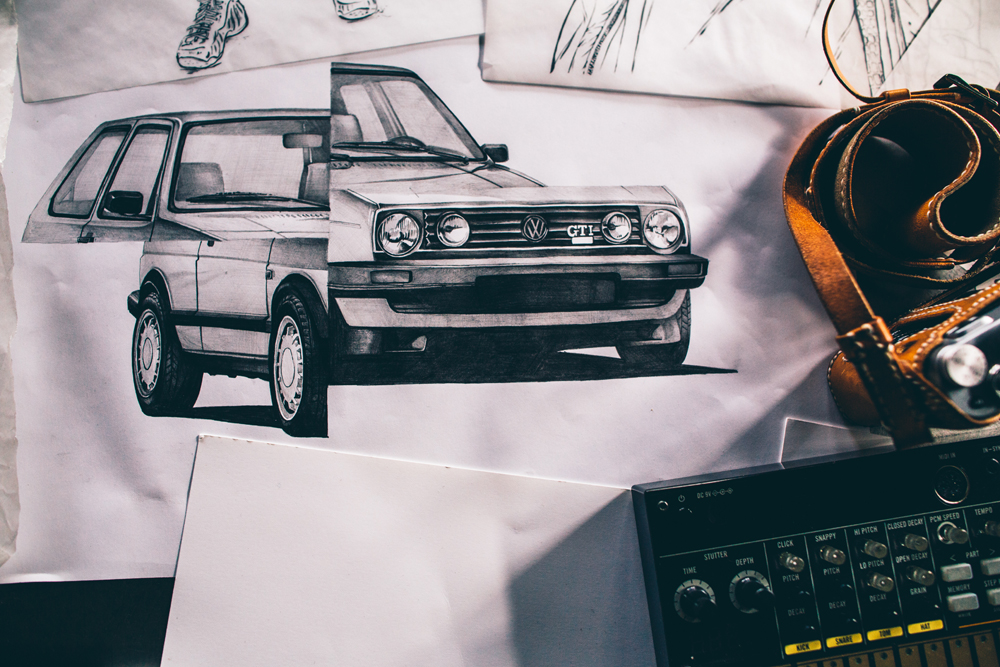
Your career is filled with many accomplishments and you have touched many areas. Do you have any new personal projects on the side? How do you go about selecting these side projects?
I’ve been trying to find the balance between my “real” job as an Art Director in advertising and my personal passion projects. Sometimes it can be really hard because I work on those side projects really late in the night, early in the morning before going to work, and during weekends. It’s a lot of work, but when I’m not working on those projects, I feel like there is something missing.
But I don’t take every job that I am offered, I am really selective when it comes to choosing projects. I just say yes to the ones that give me freedom to explore what I’m in the mood for at the time. Right now, I like do more illustration, hand-drawn stuff, so if something that could use this style comes my way, I’ll take it. I also have a full-time job so I can’t take too many projects either. I like to do one at the time and align them.
My side projects are usually the stuff I love to do for now, but thinking long term, I’d love for all of this to turn into a full-time job and quit working for someone. I recently started directing videos and would love to do more of it. We’ll see how it goes.


So tell us about the idea behind the Denzel Curry “Zone 3” video you worked on. That is your first time directing right? How was the experience?
I’ve been a big fan of rap music forever. Last year, [Denzel Curry’s] Nostalgic 64 came out. I instantly loved everything about it, the sound, the style, the cover, etc. About 6 month after, a close friend of mine told me he knew Denzel’s manager. That was my bridge to him. We got in touch and one conversation led to another. We started brainstorming together and came up with a simple idea based on the lyrics of the song. Basically, “If you are a young black African-American kid in the United States, watch out for your life!” So we wrote a treatment, put some images together, and pitched it to Denzel Curry. Next thing you know, my friend and I put a small team together and flew to Carol City, Florida, for 5 days.
Overall, it was an amazing experience, running around, meeting great people, finding ourselves in sketchy situations… I’ve seen a lot of shit in my life, but those neighborhoods were insane. Also the fact of not having any money for this project forced us to do everything ourselves, which made the experience even better. We learned so much from it, and hopefully the next one will be even better.



The readers might not be aware of this, but before becoming an Art Director, drawing [was] your primary passion. How would you describe your drawing style at the moment and who are some of the artists that helped you define your hand style? What are the techniques that you love to explore?
This question is my Achilles heel… I’ve always envied people with a “style” and I have been frustrated with myself for not having my own. It took me years to accept it, even though I still hate what I do whenever I try to draw something.
This is mainly because of the media I consumed at an early age. I grew up surrounded by so many different styles of art. At first, I was really into Classic European Comics, like Tintin, Asterix, Gaston Lagaffe – but my dad, for example,was reading edgier stuff like Fluide Glacial, French satirical comics like Charlie Hebdo, and he also made me discover American Independent artists like Robert Crumb, [The Fabulous Furry] Freak Brothers, and more. Further on in my life, I discovered Marvel, DC, and Image comics as well as Japanese Anime with Akira Toryama, Katsuhiro Otomo, and Masamune Shirow, just to name a few.

All that variety was added with all the museums I used to go to with my family, [which] got me to discover Dali, Picasso, Matisse to the Italian Renaissance. My problem was that I loved and tried to copy all those different styles at the same time. That confused me.
I’ve always been fascinated by the drawing technique versus the style, and feel like I wasted my time trying to get to “somewhat mediocre” results of proper anatomical illustration and proportions, rather than putting the right effort and time crafting and defining an identity.
It is still the case today. I want to try so many different things, but I learned how to focus and contain myself more than what I used to do in the past. Going back to the basics of illustration with pens and paper is helping me a lot. There is no cheating, the results are what I’m capable of doing and I push myself in this direction, but I don’t spread myself too thin either by trying things that I wouldn’t know how to do.
That being said, the next step is painting, my ultimate goal in life would be to sustain my family with my art. I already started some stuff that I won’t show ’cause it sucks [laughs], but I’m gonna spend more time learning the process of oil and acrylic painting.
Artists that have inspired me in no specific order are:
Jack Kirby, R Crumb, Akira Toriyama, Todd Mc Farlane, Rubens, Leo DaVinci, Vasareli, Saul Bass, Richard Estes, Robert Beschtle, Alain Bertrand, Hergé, Gotlib, Matisse, Cezanne, Murakami, Ralph Bakshi, Jim Phillips, Mignola, Moebius, Druillet, Otomo, Gericault , Renoir, Savignac, Ed Roth and so many more.
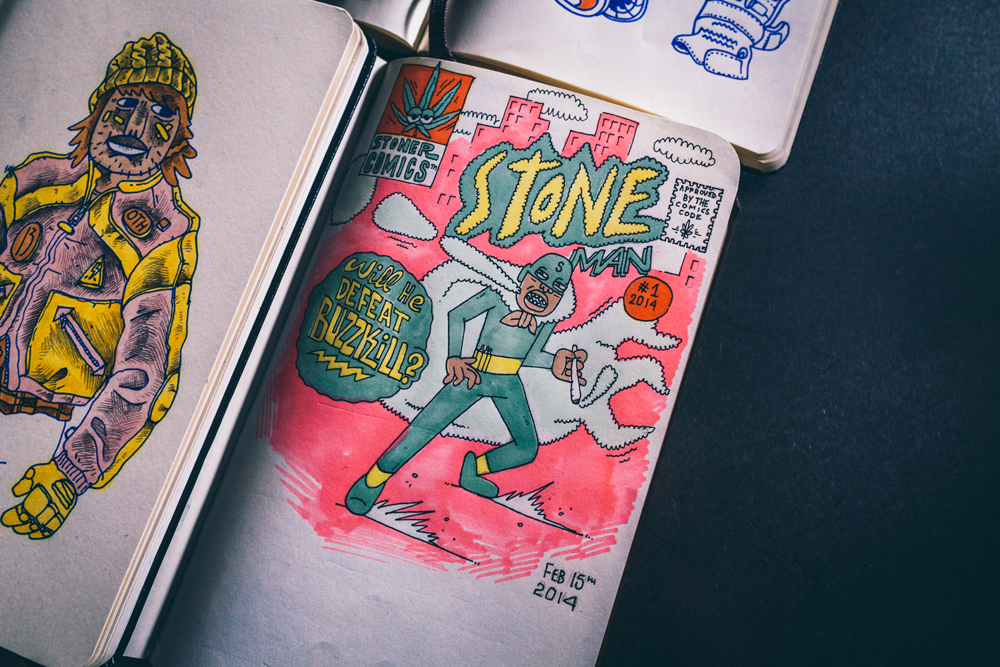
You mentioned French satirical comic Charlie Hebdo. As we all know, the sad events that have hit France in the last few days must have come a bit as of a shocker. Especially you being an artist. Would you ever imagine a cartoonist getting killed for his drawings?
As you can imagine, I’ve been really touched by what happened in France. I’m French and I grew up reading this magazine – my dad used to buy it all the time. I’d like to stay out of the politics arena but: No! A cartoon could never go too far. There are hot topics that will upset and offend people, but as a satirist, your role is to push the limits to make a point.
We should be able to laugh about everything. Vive la France et Mort aux Cons.
::
Photography by German Vizcarra (@vzmaestro).

